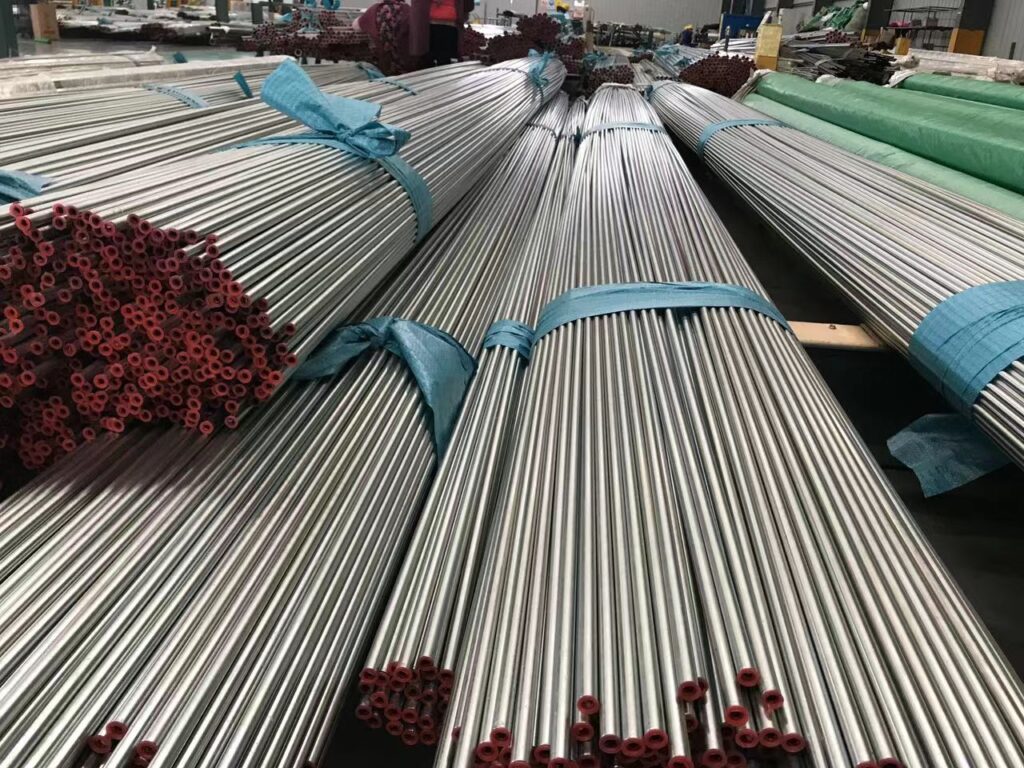Hpl Tube Manufacture Process
-
 2022-10-06
2022-10-06
-


Hydraulic And Pneumatic Pressure Tubes (hpl Tubes)
Seamless HPL tubes, and galvanized HPL tubes are seamless cold-drawn precision steel tubes predominantly for use as pressure lines in hydraulically or pneumatically operated equipment. The most commonly used grades are DIN2391, EN 10305 Galvanized Hydraulic. These grades have been successfully used as hydraulic brake tubing in light/medium trucks, buses, agricultural tractors, and construction equipment for over 50 years.
Seamless HPL tube is manufactured from high-quality carbon steels, heat treated for strength & durability, and finished with a variety of end preparations such as plain ends, beveled ends, threaded ends.
HPL tube is available in sizes ranging from 4mm to 89mm OD ,Seamless HPL tubes are produced with an outside diameter tolerance of ± 0.08mm to ± 0.40mm (different sizes).
Steel Tubes for Hydraulic and Pneumatic Power Systems
As you probably know, steel is one of the strongest materials on the planet. It’s also incredibly versatile, making it a great material for the tubes inside hydraulic and pneumatic systems. These systems are used in heavy machinery and vehicles, so they need steel tubes that can withstand lots of pressure.
That pressure means that only steel tubes are suitable for the job. You’ll discover that the steel tubes for hydraulic and pneumatic systems are often thicker than HPL tubes. Being thicker means that they can withstand more pressure, but it also means that they weigh more.
This can lead to added wear and tear on your machinery and might even make them more dangerous. HPL tubes are a lighter alternative that still has plenty of strength to last. You’ll discover that HPL tubes are usually thinner than steel tubes – which means that they’re easier to install and can fit in tighter spaces. This also means that HPL tubes weigh less, which can prevent the sorts of wear and tear that can cause maintenance headaches in the future.
Why HPL Is the Best Option for Your Rental Needs
Choosing HPL tubes over other building materials is a great decision for rental properties. The fact that they’re thinner and lighter than steel tubes will make them easier to install. It’s not uncommon for landlords to end up doing a lot of the renovation work themselves, so lighter tubes are a real blessing.
HPL tubes will also resist scratches and dents, which can happen when renters move heavy furniture. Scratches and dents can be expensive to repair and can even require replacing entire walls. HPL tubes will protect your walls from damage, keeping your maintenance costs low. HPL tubes are also resistant to mold and mildew.
This is due to the fact that the interior of HPL tubes is treated with ultraviolet light. This ultraviolet light works as a natural antimicrobial agent that prevents mold and mildew buildup – making it ideal for rental properties.
Finding the Right HPL Tubes
It’s important to select the right HPL tubes for your needs. It can be tempting to go with the cheapest option, but you’ll end up paying more in the long run.
First of all, you’ll need to decide what thickness of HPL tubes you’ll need. 6 mm tubes are the thinnest and are great for light duty applications. 10 mm tubes are a little thicker and are an excellent choice for heavy duty applications.
When it comes to deciding what type of HPL tubes you’ll need, you’ll need to consider how the tubes will be used. Household HPL tubes are a great general-use option if you’re not sure what to go with.
Pros of Using HPL Tubes During Rental
The benefits of using HPL tubes are numerous. The most obvious advantage is that they are cheap. HPL is incredibly affordable compared to other materials. This means that you can spend less upfront to get your rental property ready for tenants. Another major advantage of using HPL tubes is that they are lightweight.
This makes them easier to install and will prevent wear and tear on your hands. HPL is also resistant to mold and mildew, which can be a big problem in rental properties. This means that you won’t have to replace your HPL tubes as often, saving you even more money in the long run. HPL tubes are also easy to repair, which can come in handy if tenants accidentally damage them during their stay. HPL tubes are also easy to paint, so you can customize your rental property by painting the walls or ceiling a different color.
Cons of Using HPL Tubes During Rental
Despite all of the benefits listed above, there are a few drawbacks to using HPL tubes during rental. The biggest drawback is that they aren’t resistant to high levels of pressure.
This means that they aren’t suitable for use in places that experience a lot of force. Another drawback is that HPL tubes can be prone to splitting when they’re bent over sharp edges.
While you can repair HPL tubes, it’s important to take precautions against damaging them in the first place. Finally, HPL tubes are not suitable for long-term use. They are designed to be a temporary solution, so you’ll need to replace them after a few years.
Conclusion
HPL tubes are an affordable and versatile material that can be used for a variety of applications. They are lightweight and easy to install, making them a great choice for rental properties. HPL is also resistant to mold and mildew, which can be a big problem in rental properties.
The best part about HPL tubes is that they are easy to repair and can be repainted to suit the tenant’s taste. They’re also an affordable option to get your rental property ready to rent out. Choosing HPL tubes over other materials can save you thousands of dollars in renovations and help you get tenants in your rental faster.



